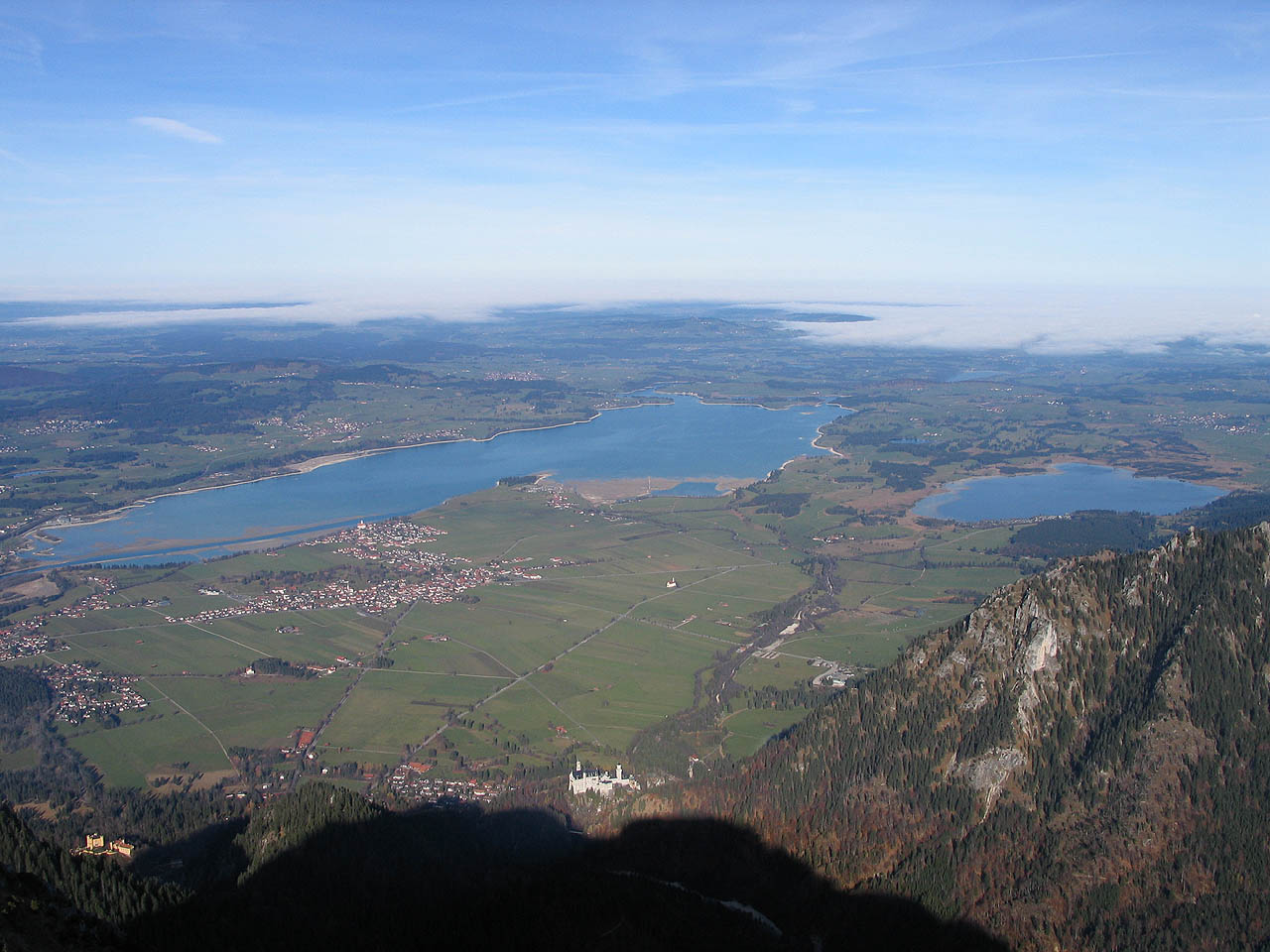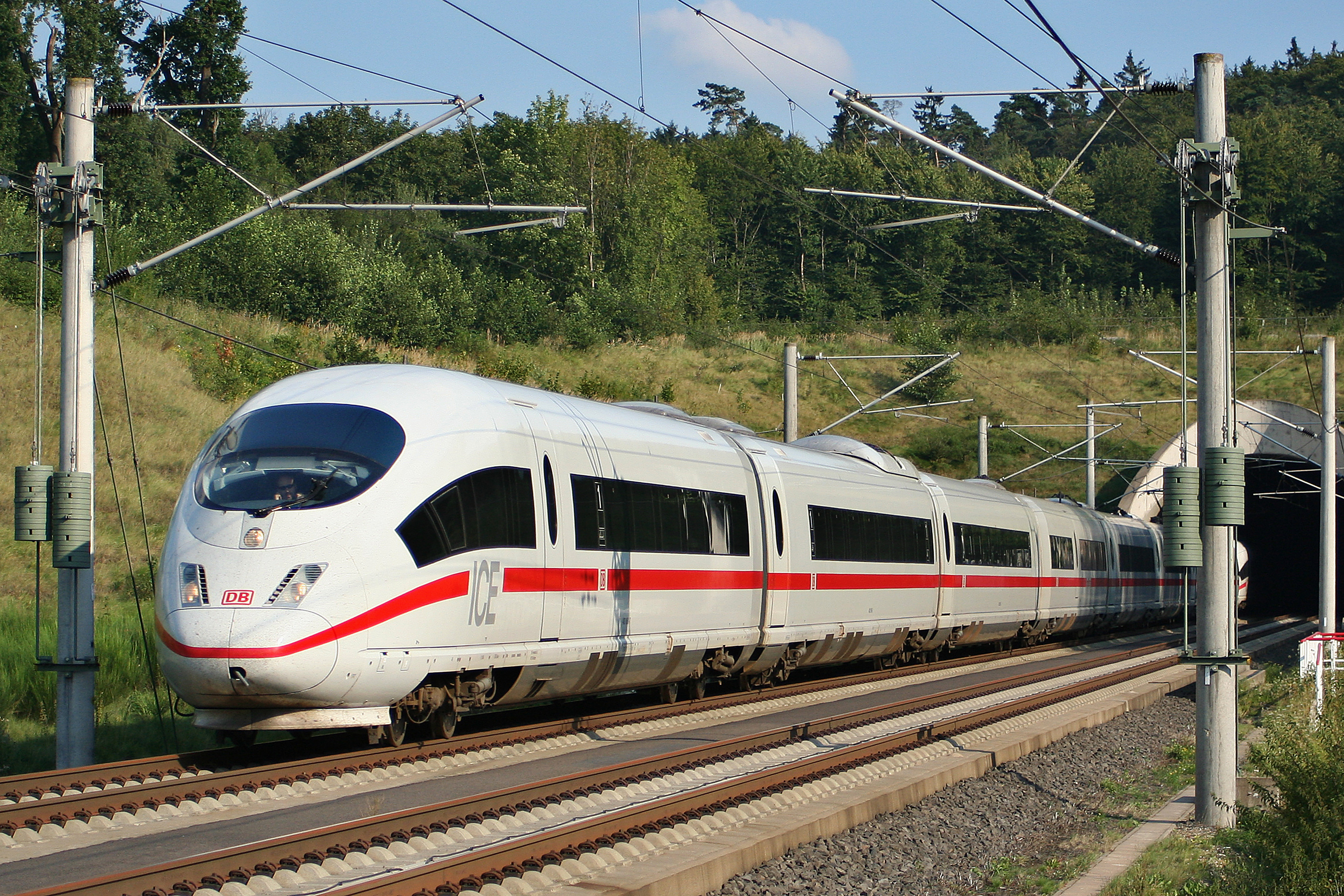|
Biessenhofen–Füssen Railway
The Biessenhofen–Füssen railway is a single-track and non-electrified branch line in the German state of Bavaria and it is a branch line connecting Füssen with the village of Biessenhofen on the Buchloe–Lindau railway. The Biessenhofen station, Biessenhofen–Marktoberdorf section was opened in 1876 by the Royal Bavarian State Railways. On 1 June 1889, the extension to Füssen was opened, but it was built and operated by the private Lokalbahn AG (LAG). After its bankruptcy, the Marktoberdorf–Füssen section was nationalised on 1 August 1938. Until the end of 2018, the track was operated by Deutsche Bahn and also known by the name ''König-Ludwig-Bahn'' ("Ludwig II of Bavaria, King Ludwig Railway"). Since then, it has been operated by the private operator Bayerische Regiobahn. Transport The line is served hourly by Regionalbahn services on the Augsburg Hauptbahnhof, Augsburg– route (RB77). The München Hauptbahnhof, Munich–Füssen route (RB 68) is also served by three ... [...More Info...] [...Related Items...] OR: [Wikipedia] [Google] [Baidu] |
Buchloe
Buchloe (; Swabian: ''Buechla'') is a community raised to town status in 1954, lying in Ostallgäu district in Bavaria. Together with the neighbouring communities of Jengen, Lamerdingen and Waal, Buchloe belongs to the ''Verwaltungsgemeinschaft'' ("administrative community") of Buchloe. Geography and transport Buchloe lies right on Bundesautobahn 96 (Munich–Buchloe–Memmingen–Lindau) with interchanges with ''Bundesstraße'' ("Federal Highway") 12 (Lindau by way of Munich and Passau to Philippsreut) and describes itself as the "Gateway to the Allgäu". Buchloe station is an important railway hub for traffic on the Munich–Kempten–Lindau route on the Munich–Buchloe and the Buchloe–Lindau lines (KBS 970) and on the Augsburg–Buchloe and the Buchloe–Memmingen lines with their IC services and direct services into Switzerland by EuroCity-Express. Coat of arms Buchloe has quite a simple coat of arms, being a shield, party per pale, gules and argent. It was besto ... [...More Info...] [...Related Items...] OR: [Wikipedia] [Google] [Baidu] |
Biessenhofen
Biessenhofen is a municipality in the district of Ostallgäu in Bavaria in Germany Germany, officially the Federal Republic of Germany, is a country in Central Europe. It lies between the Baltic Sea and the North Sea to the north and the Alps to the south. Its sixteen States of Germany, constituent states have a total popu .... References Ostallgäu {{Ostallgäu-geo-stub ... [...More Info...] [...Related Items...] OR: [Wikipedia] [Google] [Baidu] |
Branch Lines In Bavaria
A branch, also called a ramus in botany, is a stem that grows off from another stem, or when structures like veins in leaves are divided into smaller veins. History and etymology In Old English, there are numerous words for branch, including , , , and . There are also numerous descriptive words, such as (that is, something that has bled, or 'bloomed', out), (literally 'little bough'), (literally 'on growth'), and (literally 'offspringing'). Numerous other words for twigs and boughs abound, including , which still survives as the ''-toe'' in ''mistletoe''. Latin words for branch are or . The latter term is an affix found in other modern words such as ''cladodont'' (prehistoric sharks with branched teeth), ''cladode'' (flattened leaf-like branches), or ''cladogram'' (a branched diagram showing relations among organisms). Woody branches Large branches are known as boughs and small branches are known as twigs. The term ''twig'' usually refers to a terminus, while ''bough ... [...More Info...] [...Related Items...] OR: [Wikipedia] [Google] [Baidu] |
Neuschwanstein
Neuschwanstein Castle (, ; ) is a 19th-century historicist palace on a rugged hill of the foothills of the Alps in the very south of Germany, near the border with Austria. It is located in the Swabia region of Bavaria, in the municipality of Schwangau, above the incorporated village of Hohenschwangau, which is also the location of Hohenschwangau Castle. The closest larger town is Füssen. The castle stands above the narrow gorge of the Pöllat stream, east of the Alpsee and Schwansee lakes, close to the mouth of the Lech into Forggensee. Despite the main residence of the Bavarian monarchs at the time—the Munich Residenz—being one of the most extensive palace complexes in the world, King Ludwig II of Bavaria felt the need to escape from the constraints he saw himself exposed to in Munich, and commissioned Neuschwanstein Castle on the remote northern edges of the Alps as a retreat but also in honour of composer Richard Wagner, whom he greatly admired. Ludwig chose ... [...More Info...] [...Related Items...] OR: [Wikipedia] [Google] [Baidu] |
Alstom Coradia LINT
The Alstom Coradia LINT is an Articulated car, articulated railcar of the Alstom Coradia family manufactured by Alstom since 1999, offered in diesel and hydrogen fuel models. The acronym ''LINT'' is short for the German ''"leichter innovativer Nahverkehrstriebwagen"'' (light innovative local transport rail vehicle). It was designed by Linke-Hofmann-Busch (LHB; acquired 1996 by Alstom) and has been distributed as part of Alstom's Coradia (train), Coradia family. Description The type designation gives the vehicle's length: the one-piece type LINT 27 has a length of and is also known as ''Baureihe 640'' (DB class 640) of Deutsche Bahn. The two-part train with a Jacobs-bogie, LINT 41, is long. In Germany it is classified as ''Baureihe 648'' (DB Class 648), ''Baureihe 0623'' and ''Baureihe 1648''. Trainsets LINT 54 ''Baureihe 0622'' using two car bodies and LINT 81 ''Baureihe 0620/0621'' using three car bodies have been introduced in 2013. The Alstom Coradia LINT is part of Alstom C ... [...More Info...] [...Related Items...] OR: [Wikipedia] [Google] [Baidu] |
München Hauptbahnhof
München Hauptbahnhof or Munich Central Station is the main railway station in the city of Munich, Germany. It is one of the three stations with long-distance services in Munich, the others being Munich East station (''München Ost'') and Munich-Pasing station (''München-Pasing''). München Hauptbahnhof sees about 450,000 passengers a day, which puts it on par with other large stations in Germany, such as Hamburg Hauptbahnhof and Frankfurt (Main) Hauptbahnhof. It is classified by Deutsche Bahn as a German railway station categories, category 1 station, one of 21 in Germany and two in Munich, the other being ''München Ost''. The mainline station is a terminal station with 32 platforms. The subterranean Munich S-Bahn, S-Bahn with 2 platforms and Munich U-Bahn, U-Bahn stations with 6 platforms are through stations. The first Munich station was built about to the west in 1839. A station at the current site was opened in 1849 and it has been rebuilt numerous times, including to repl ... [...More Info...] [...Related Items...] OR: [Wikipedia] [Google] [Baidu] |
Augsburg Hauptbahnhof
Augsburg Hauptbahnhof is the main railway station in the Bavarian city of Augsburg, situated in southern Germany. It is classified by Deutsche Bahn as a category 2 station and has 12 platform tracks. The station has one of the oldest still existing station halls in Germany, which was built from 1843 to 1846 after plans by architect Eduard Rüber. It was reconstructed in 1869 according to Friedrich Bürklein's plans. The station today serves as the central railway hub for the Augsburg metropolitan area and Bavarian Swabia. It is currently being modernised and an underground tram station is being built under it. Structure The first Augsburg station was opened in 1840 by the Munich-Augsburg Railway Company (''München-Augsburger Eisenbahn-Gesellschaft'') near the ''Rotes Tor'' (Red Gate). Its historic hall served in 1880 as a military riding school and since 1920 it has been part of the main workshop of the traffic branch of ''Stadtwerke Augsburg'' (Augsburg's municipal utility ... [...More Info...] [...Related Items...] OR: [Wikipedia] [Google] [Baidu] |
Regionalbahn
The ''Regionalbahn'' (; lit. Regional train; abbreviated ''RB'') is a train categories in Europe, type of Regional rail, local passenger train (stopping train) in Germany. It is similar to the Regionalzug (R) and Regio (Swiss railway train), Regio (R) train categories in neighboring Austria and Switzerland, respectively. Service ''Regionalbahn'' trains usually call at all stations on a given line, with the exception of ''RB'' trains within S-Bahn networks - these may only call at selected stations. Thus, they rank below the ''Regional-Express'' train, which regularly stops only at selected stations on its route. Operators ''RB'' trains are subject to franchising by the States of Germany, federal states of Germany; whilst many ''RB'' trains are still operated by DB Regio, the local traffic division of the former monopolist Deutsche Bahn, franchises often go to other companies, like Abellio Deutschland, Eurobahn or Transdev Germany. There is no obligation to use the term ''Regi ... [...More Info...] [...Related Items...] OR: [Wikipedia] [Google] [Baidu] |
Bayerische Regiobahn
Transdev Germany is the largest private operator of passenger buses and trains in Germany. It is a subsidiary of Transdev. History In 1997, Aktiengesellschaft für Industrie und Verkehrswesen was purchased by a CGEA Group (60%) EnBW (40%) consortium. In 2000, CGEA bought EnBW's shares and rebranded the operation Connex Verkehr. in April 2006 it was rebranded as Veolia Verkehr, and following the merger of Transdev and Veolia Transport as Transdev in March 2015. Transdev, as was the case with Veolia and Connex, operates dozens of subsidiaries, each with their own name. Most of them operate small, regional train and bus services. Rail services Transdev subsidiaries operate the following services: * Bayerische Oberlandbahn GmbH, Holzkirchen, and ''Bayerische Regiobahn GmbH'', Augsburg, with these shared brands ** '' BRB Oberland'' (formerly ''BOB''), ** '' BRB Chiemgau-Inntal'' (formerly ''Meridian''), ** ''BRB Ammersee-Altmühltal'' and ** ''BRB Ostallgäu-Lechfeld'' ** ''BRB ... [...More Info...] [...Related Items...] OR: [Wikipedia] [Google] [Baidu] |
Ludwig II Of Bavaria
Ludwig II (Ludwig Otto Friedrich Wilhelm; 25 August 1845 – 13 June 1886), also called the Swan King or the Fairy Tale King (), was King of Bavaria from 1864 until his death in 1886. He also held the titles of Count Palatine of the Rhine, Duke of Bavaria, Duke of Franconia, and Duke in Swabia. Outside Germany, he is at times called "the Mad King" or Mad King Ludwig. Ludwig ascended to the throne in 1864 at the age of 18. He increasingly withdrew from day-to-day affairs of state in favour of extravagant artistic and architectural projects. He commissioned the construction of lavish palaces: Neuschwanstein Castle, Linderhof Palace, and Herrenchiemsee. He was also a devoted patron of the composer Richard Wagner. Ludwig spent all his own private royal revenues (although not state funds as is commonly thought) on these projects, borrowed extensively, and defied all attempts by his ministers to restrain him. This extravagance was used against him to declare him insane, a determination ... [...More Info...] [...Related Items...] OR: [Wikipedia] [Google] [Baidu] |
Deutsche Bahn
(, ; abbreviated as DB or DB AG ) is the national railway company of Germany, and a state-owned enterprise under the control of the German government. Headquartered in the Bahntower in Berlin, it is a joint-stock company ( AG). DB was founded after the merger between Deutsche Bundesbahn and the East German Deutsche Reichsbahn in 1994 after the unification of Germany and has been operating ever since. is the second-largest transport company in Germany, after the German postal and logistics company / DHL. DB provides both long-distance and regional transport, serving around 132 million long distance passengers and 1.6 billion regional passengers in 2022. In 2022, DB transported 222 million tons of cargo. Company profile The group is divided into several companies, including '' DB Fernverkehr'' (long-distance passenger), '' DB Regio'' (local passenger services) and '' DB Cargo'' (rail freight). The Group subsidiary '' DB InfraGO'' also operates large parts of the German ... [...More Info...] [...Related Items...] OR: [Wikipedia] [Google] [Baidu] |





